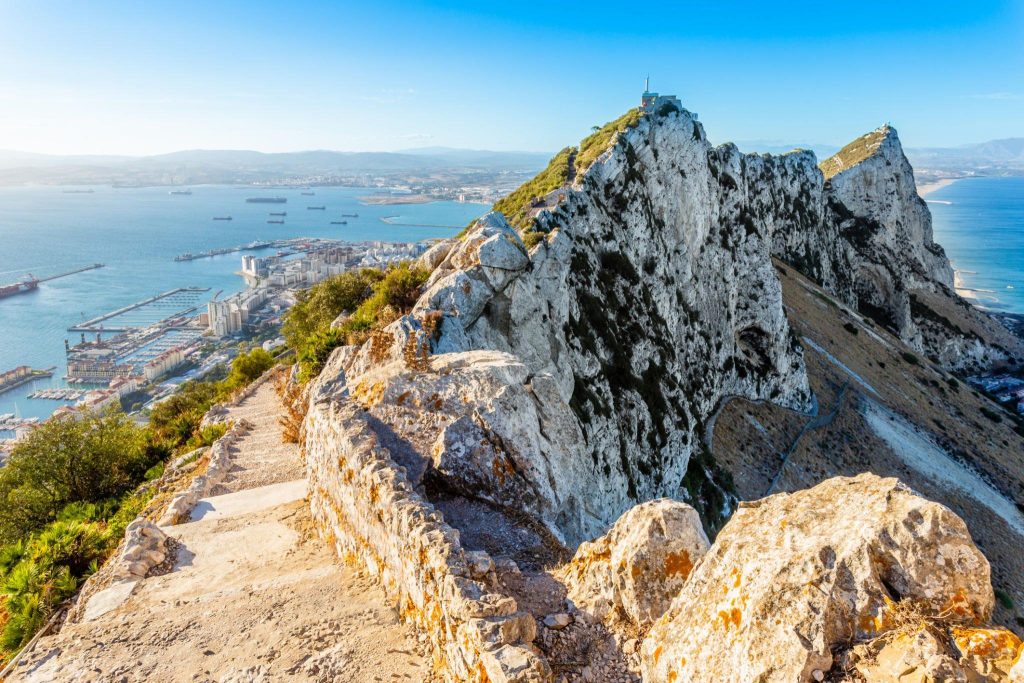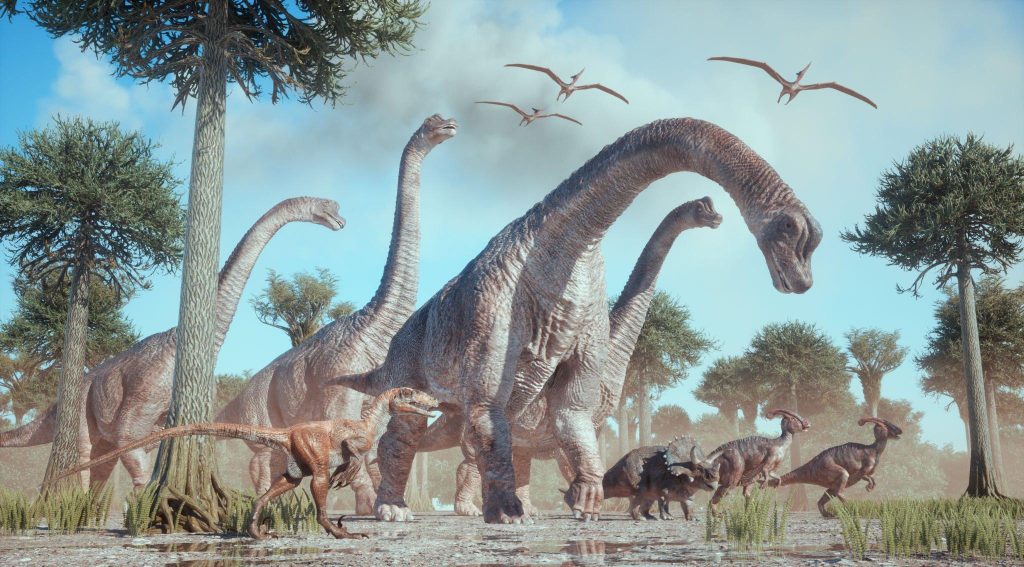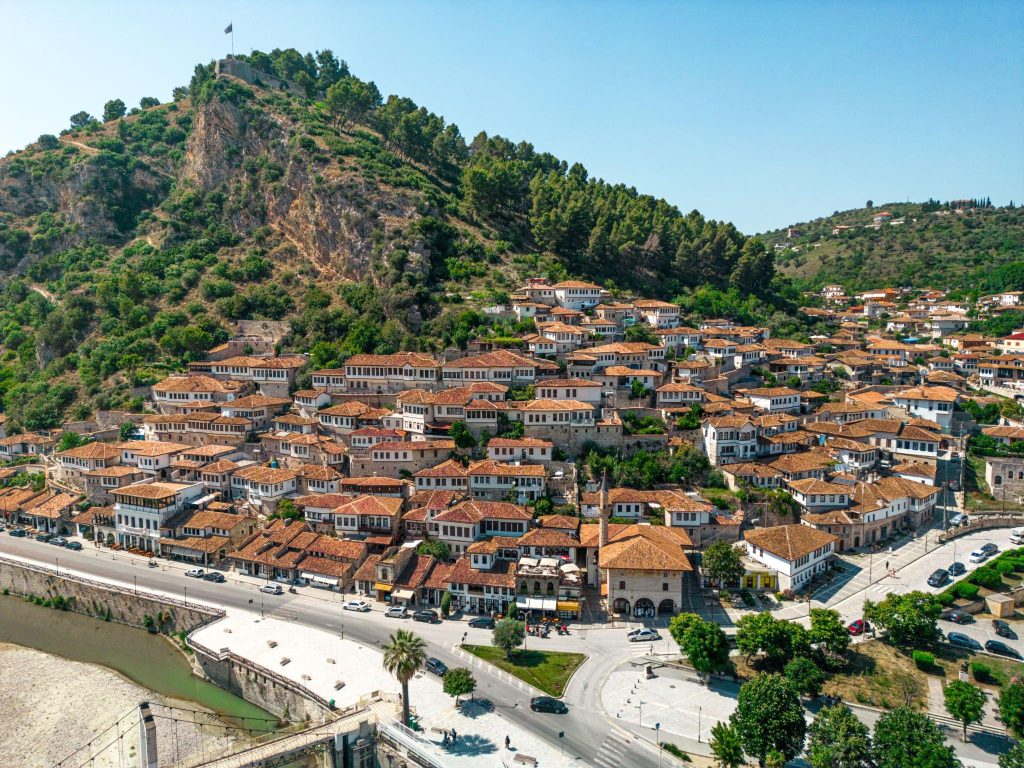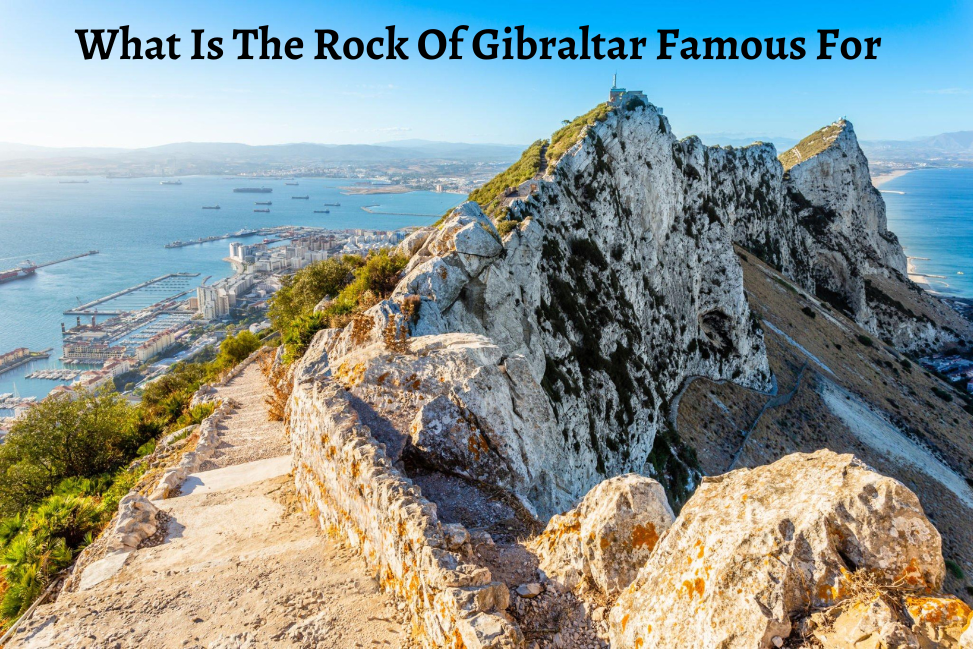
Nestled at the crossroads of history, geography, and enduring allure, the Rock of Gibraltar stands as a sentinel of time, an emblem of nature’s majesty, and a testament to the interplay of cultures.
From its limestone core to its strategic prominence, this iconic monolith boasts a tapestry of narratives that captivate the imagination and beckon explorers from across the world.
In this exploration, we embark on a journey to unravel the Rock of Gibraltar’s remarkable facets—details that make it not just a rock, but a living chronicle of the Earth’s past and humanity’s impact.
From its geological underpinnings to its strategic significance, spanning ancient species to UNESCO acclaim, every facet of the Rock’s character unveils stories of endurance, ingenuity, and harmonious coexistence. If you’re intrigued by regions that stand out like Virginia, explore what sets Virginia apart on Tales of Travelers for a deeper understanding of its unique distinctions and contributions.
Join us as we delve deep into the heart of Gibraltar, peeling back the layers that comprise its allure. By the end of this voyage, you’ll see that the Rock’s significance isn’t limited to its imposing stature; it’s a multidimensional marvel that has shaped destinies, inspired legends, and etched its presence onto the canvas of history.
Contents
- 1 The Rock of Gibraltar is made of limestone
- 2 The Rock of Gibraltar is located on the Iberian Peninsula
- 3 The Rock of Gibraltar dates back to the Jurassic period
- 4 The Rock of Gibraltar is home to Barbary macaques
- 5 There is only one native flower on the Rock of Gibraltar
- 6 The Rock of Gibraltar has underground tunnels
- 7 The Rock of Gibraltar is home to a UNESCO World Heritage Site
- 8 Conclusion
The Rock of Gibraltar is made of limestone
As you gaze upon the majestic Rock of Gibraltar, its formidable structure reveals a tale of enduring resilience—a story shaped by the very substance of its being: limestone.
Comprising the heart and soul of this iconic monolith, limestone is a sedimentary rock born from the accumulation of marine organisms, minerals, and sediments over countless millennia. This remarkable rock, formed through a slow dance of nature, stands as a testament to time’s patient craftsmanship.
The Rock of Gibraltar’s intriguing charm is amplified by its unique geological feature. Formed from ancient ocean-floor sediments, the limestone’s porous nature has provided the perfect canvas for rainwater to carve out an intricate subterranean maze of caves and tunnels deep within the heart of the Rock.
This hidden labyrinth adds a mysterious dimension to Gibraltar’s appeal, offering captivating insights into its geological evolution. For more on Virginia’s standout qualities, you can explore this page on “VA’s standout qualities.
The significance of limestone extends beyond its physicality. It weaves Gibraltar’s story back to the Jurassic period, a time when dinosaurs roamed the Earth. A living relic of the past, the Rock’s limestone layers hold within them the whispers of ancient ecosystems and changing landscapes.
From its rugged facade to its historical resonance, the Rock of Gibraltar’s limestone foundation shapes its identity and significance. It’s a reminder of the Earth’s intricate processes and the beauty that emerges when nature and time collaborate. As you stand before the Rock, you stand before a geological masterpiece that narrates the tale of our planet’s evolution.
The Rock of Gibraltar is located on the Iberian Peninsula
Perched proudly at the southern extremity of the Iberian Peninsula, the Rock of Gibraltar asserts its presence as a geographic marvel and historical crossroads.
Its strategic positioning at this pivotal juncture between the Mediterranean Sea and the Atlantic Ocean has bestowed upon it a role of paramount importance throughout the annals of time.
This rock formation, jutting defiantly into the horizon, has acted as a sentinel, guarding the entrance to the Mediterranean and controlling the vital maritime routes that traverse the waters.
Its position has rendered Gibraltar a covetable prize for empires, nations, and strategists, as its ownership has equated to dominance over trade, security, and geopolitics.
Perched strategically at the crossroads of Europe and Africa, The Rock’s geographic location serves as a testament to its role as a cultural melting pot. Over the centuries, this meeting point has given rise to a rich tapestry of history, interweaving Spanish, British, and various other cultural influences into the unique fabric that defines Gibraltar today. If you’re intrigued by the blending of diverse cultures, you might find the Texas oil industry equally fascinating.
As you stand before the Rock of Gibraltar, you stand at the intersection of land and sea, of history and opportunity. It’s a testament to the profound impact that geography can wield on the destinies of nations and the shaping of global narratives.
The Rock of Gibraltar dates back to the Jurassic period

The Rock of Gibraltar, with its towering prominence, holds within its ancient heart the whispers of an unimaginably distant past—tracing its lineage back over 200 million years to the remarkable expanse of time known as the Jurassic period. In this primordial era, well before the ascent of humankind, the foundations of this limestone giant began to take shape.
As the Earth’s continents shifted and collided, the Rock emerged as a result of tectonic forces and the slow accumulation of sediments. Through the ages, these sediments transformed into the limestone that forms the core of the Rock we marvel at today. Its stratified layers stand as geological records, a chronicle etched in stone, bearing witness to the ebb and flow of epochs.
The Rock’s affiliation with the Jurassic period echoes the distant roar of dinosaurs and the pulse of ancient ecosystems. It serves as a living relic from a time when the planet’s landscape was a canvas painted by forces beyond imagination.
When you stand before the Rock of Gibraltar, you’re standing before a testament to the Earth’s enduring legacy. It’s a tangible connection to the world as it once was—a gateway through which to glimpse the majesty and mystery of the past. The Rock’s history reaches back through time, intertwining the narratives of nature and humanity in a symphony that spans millennia.
The Rock of Gibraltar is home to Barbary macaques
Nestled within the rugged embrace of the Rock of Gibraltar resides a population of enchanting residents that adds a touch of untamed wonder to this iconic monolith—the Barbary macaques. Just as Gibraltar is known for its unique wildlife, explore Indianapolis’ standout features that contribute to its distinctive character.
These charismatic primates, Europe’s sole wild monkey population, have established their realm on this limestone fortress, creating a living connection to Gibraltar’s wild heart.
With their expressive faces and lively antics, the Barbary macaques captivate all who encounter them. Legends intertwine with their presence, lending an air of mystique to their existence.
Sharing a lineage that stretches back through the annals of time, these macaques offer a tangible connection to the ancient ecosystems that once thrived in this region.
Their habitat, thriving amidst the Rock’s crevices and ledges, presents an intriguing example of nature’s adaptability. Observing these macaques in their natural environment offers a glimpse into the coexistence of human history and the wild.
Their existence is a reminder that even in the modern world, pockets of untouched nature persist, inviting us to contemplate the delicate balance between nature’s inhabitants and the landscapes they call home.
As you stand before the Rock of Gibraltar, the Barbary macaques remind us that the Earth’s stories are woven not just through geology and history but also through the living beings that inhabit its folds.
Their presence adds a layer of enchantment to Gibraltar’s allure, a testament to the complex relationship between nature and human exploration.
There is only one native flower on the Rock of Gibraltar

Amidst the rugged terrain of the Rock of Gibraltar, a solitary symbol of endurance and tenacity blooms—the Gibraltar candytuft, the Rock’s sole native flower. This unassuming yet resilient blossom embodies nature’s ability to thrive even in the harshest of environments.
Endemic to the Rock’s unique ecosystem, the Gibraltar candytuft stands as a living testament to the intricate dance between life and adversity. Its ability to adapt and flourish amidst the challenging conditions of the limestone terrain showcases the beauty of nature’s resilience.
As the lone native flower of Gibraltar, the candytuft holds a special place in the Rock’s narrative. Its delicate petals contrast against the rugged backdrop, a delicate brushstroke in the canvas of Gibraltar’s landscape.
Its presence carries a profound message—one of strength, fortitude, and the remarkable ability of life to establish itself even in the most unlikely of places.
As you explore the Rock of Gibraltar, the Gibraltar candytuft’s presence serves as a reminder that even in the face of adversity, nature finds a way to bloom. It’s a poignant reflection of the Rock’s spirit, echoing the idea that within challenges lies the potential for growth and beauty.
The Rock of Gibraltar has underground tunnels
Beneath the rugged exterior of the Rock of Gibraltar lies a hidden world of intrigue—a labyrinthine network of underground tunnels that winds through its heart. Carved over centuries, these tunnels are a testament to human ingenuity, strategic foresight, and the evolving purposes that the Rock has served.
Explore the rich history of similar cultural landmarks at the “National Cowboy Museum” in Oklahoma to appreciate the diverse heritage of such iconic structures.
These subterranean passages have witnessed the passage of time, from their origins as military installations to their modern-day role as historical treasures.
The tunnels weave a story of defense and adaptation, offering a glimpse into the strategies employed to safeguard Gibraltar’s strategic importance.
As you venture into the depths of these tunnels, you step into the footsteps of generations past, from soldiers and engineers who hewed them to the modern-day explorers who traverse their lengths.
The echoes of history reverberate through these dimly lit passages, whispering tales of warfare, resilience, and the ever-changing nature of conflict.
Gibraltar’s underground tunnels stand as a testament to human endeavor—a tangible link between the Rock’s past and present.
They invite us to contemplate the intersection of architecture, history, and the strategic importance that has made the Rock a sought-after prize for empires and nations throughout history. These tunnels are more than just physical passageways; they are conduits to the stories that shape Gibraltar’s identity.
The Rock of Gibraltar is home to a UNESCO World Heritage Site

Nestled within the grandeur of the Rock of Gibraltar lies a treasure recognized on a global scale—a UNESCO World Heritage Site. This prestigious designation is a testament to the Rock’s profound historical and cultural significance, making it a custodian of human heritage.
The Rock’s recognition by UNESCO transcends its physical presence. It symbolizes the threads that connect us to the past, the stories that have shaped civilizations, and the importance of preserving these narratives for future generations.
This designation is a nod to Gibraltar’s rich and diverse history—its role as a fortress, a strategic vantage point, and a meeting place of cultures.
It stands as a reminder that the Rock’s significance extends beyond its limestone cliffs and panoramic views; it encompasses the legacy of human endeavors, conflicts, and coexistence.
As you stand before the Rock of Gibraltar, you stand before a living testament to humanity’s shared heritage. Its UNESCO World Heritage status invites contemplation of the layers of history that have unfolded on its surface and within its depths.
The Rock’s recognition on this global stage underscores its role as a bridge between the past, present, and future—a bridge that carries the echoes of generations long gone into the tapestry of time. If you’re interested in exploring more about the historical sites of Maine, don’t miss the opportunity to delve into the rich heritage of this fascinating state.
Discover a wealth of historical treasures in Maine by visiting our dedicated page on “Historical sites of Maine.” These sites have played a pivotal role in shaping the state’s history and are a testament to its enduring legacy.
Conclusion
In concluding our journey through the captivating narrative of the Rock of Gibraltar, we are left in awe of its multidimensional significance. Beyond its physical grandeur, the Rock embodies stories of resilience, history, and coexistence.
Its limestone foundation and strategic positioning speak of time’s patient craftsmanship and its role as a guardian of maritime routes. The Barbary macaques and Gibraltar candytuft add layers of natural wonder to its tale.
Designated as a UNESCO World Heritage Site, the Rock safeguards human heritage and underscores its cultural importance. As we step away, the Rock’s imprint remains—a powerful symbol that bridges the past, present, and future. The Rock of Gibraltar isn’t just a monolith; it’s a living testament to the Earth’s evolution and humanity’s story.

